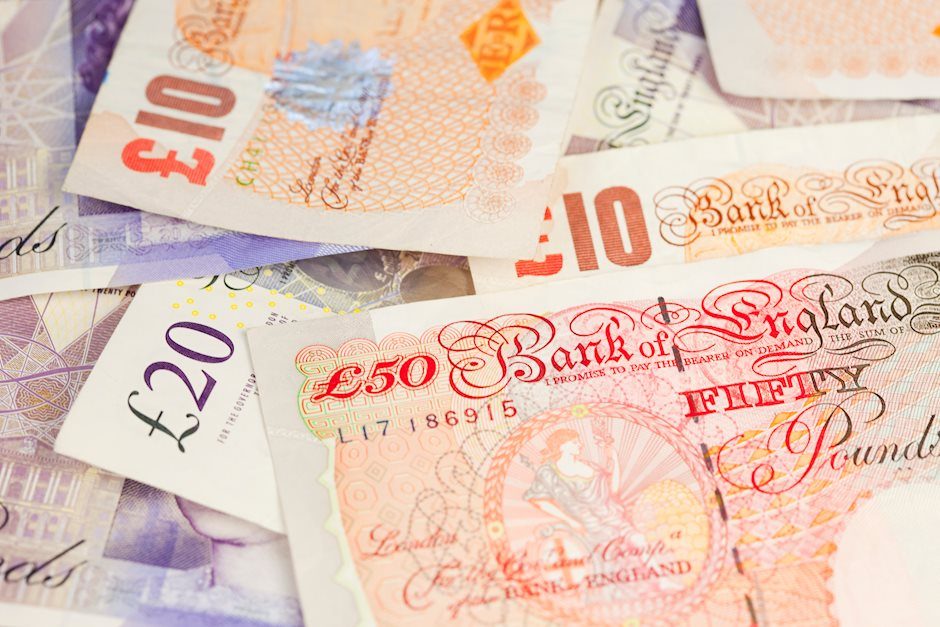GBP/USD Forecast: Pound Sterling looks to push higher after rising above key hurdle
- GBP/USD regained its traction and climbed above 1.2500 on Thursday.
- The US Dollar stays under selling pressure ahead of key data releases.
- The US economy is forecast to grow at an annual rate of 2.5% in Q1.

After closing the second consecutive day in positive territory on Wednesday, GBP/USD gathered bullish momentum and climbed above 1.2500 for the first time in nearly two weeks on Thursday. The pair's near-term technical outlook points to a bullish tilt.
The renewed US Dollar (USD) weakness helps GBP/USD stretch higher in the European session. The decline seen in US stock index futures point to a risk-averse market atmosphere but this seems to be caused by sharp declines seen in large-cap stocks, such as Meta.
In the second half of the day, the US Bureau of Economic Analysis will publish its first estimate of the first quarter real Gross Domestic Product (GDP) growth. The US economic is expected to expand at an annual rate of 2.5% following the impressive 3.4% growth recorded in the last quarter of 2023.
Earlier this week, disappointing PMI data from the US caused the USD to come under selling pressure. Although markets still see a stronger-than-80% chance that the Federal Reserve (Fed) will leave the policy rate unchanged in June, a weak GDP print could influence the Fed rate outlook for the rest of the year and trigger another leg lower in the USD. On the other hand, GBP/USD could turn south if the data shows that the US economy grew at a stronger pace than estimated in Q1.
GBP/USD Technical Analysis
GBP/USD was last seen trading slightly above 1.2500, where the upper limit of the descending regression channel and the 100-period Simple Moving Average (SMA) on the 4-hour chart are located. Once this level is confirmed as support, 1.2530 (Fibonacci 38.2% retracement of the latest downtrend) could be seen as interim resistance before 1.2560 (200-day SMA).
If GBP/USD fails to stabilize above 1.2500, buyers could be discouraged. In this scenario, supports could be seen at 1.2450 (Fibonacci 23.6% retracement), 1.2430 (50-period SMA) and 1.2400 (psychological level, static level).
Pound Sterling FAQs
The Pound Sterling (GBP) is the oldest currency in the world (886 AD) and the official currency of the United Kingdom. It is the fourth most traded unit for foreign exchange (FX) in the world, accounting for 12% of all transactions, averaging $630 billion a day, according to 2022 data. Its key trading pairs are GBP/USD, aka ‘Cable’, which accounts for 11% of FX, GBP/JPY, or the ‘Dragon’ as it is known by traders (3%), and EUR/GBP (2%). The Pound Sterling is issued by the Bank of England (BoE).
The single most important factor influencing the value of the Pound Sterling is monetary policy decided by the Bank of England. The BoE bases its decisions on whether it has achieved its primary goal of “price stability” – a steady inflation rate of around 2%. Its primary tool for achieving this is the adjustment of interest rates. When inflation is too high, the BoE will try to rein it in by raising interest rates, making it more expensive for people and businesses to access credit. This is generally positive for GBP, as higher interest rates make the UK a more attractive place for global investors to park their money. When inflation falls too low it is a sign economic growth is slowing. In this scenario, the BoE will consider lowering interest rates to cheapen credit so businesses will borrow more to invest in growth-generating projects.
Data releases gauge the health of the economy and can impact the value of the Pound Sterling. Indicators such as GDP, Manufacturing and Services PMIs, and employment can all influence the direction of the GBP. A strong economy is good for Sterling. Not only does it attract more foreign investment but it may encourage the BoE to put up interest rates, which will directly strengthen GBP. Otherwise, if economic data is weak, the Pound Sterling is likely to fall.
Another significant data release for the Pound Sterling is the Trade Balance. This indicator measures the difference between what a country earns from its exports and what it spends on imports over a given period. If a country produces highly sought-after exports, its currency will benefit purely from the extra demand created from foreign buyers seeking to purchase these goods. Therefore, a positive net Trade Balance strengthens a currency and vice versa for a negative balance.
Premium
You have reached your limit of 3 free articles for this month.
Start your subscription and get access to all our original articles.
Author

Eren Sengezer
FXStreet
As an economist at heart, Eren Sengezer specializes in the assessment of the short-term and long-term impacts of macroeconomic data, central bank policies and political developments on financial assets.

















